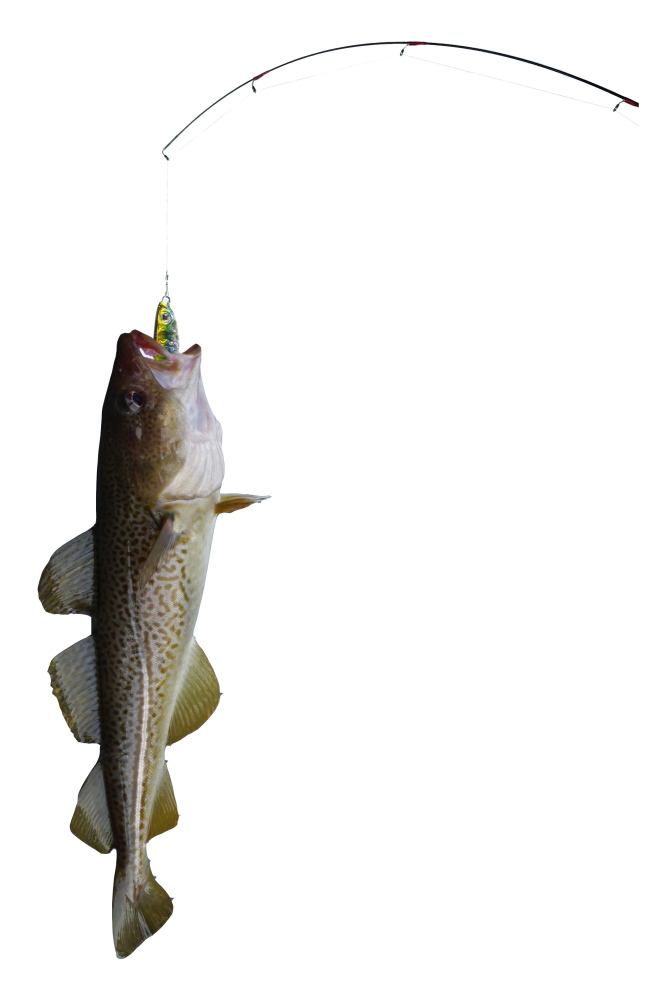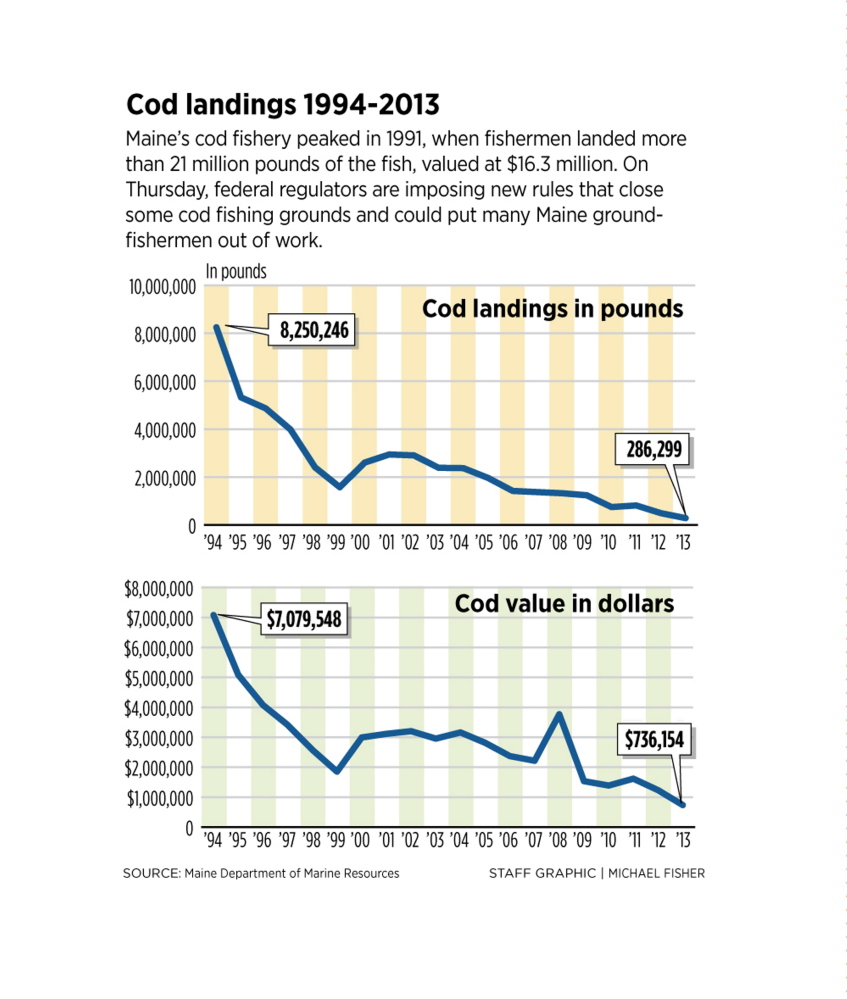Federal regulators will impose a rash of emergency measures Thursday that will effectively make it impossible for commercial fishermen to pursue cod in the Gulf of Maine.
Concerned about cod populations that have collapsed to record lows, regulators are closing some historic fishing grounds, limiting the amount of cod that can be caught incidentally while fishing for other species, and banning recreational fishermen from possessing cod for the next six months.
“This is a stock that is in free-fall,” John Bullard, fisheries regional administrator for the National Oceanic and Atmospheric Administration, said at a news conference Monday in Gloucester, Massachusetts. “I can’t overstate the difficulty of the task before us.”
Cod stocks in the Gulf of Maine are at the lowest level since scientists began tracking the species 40 years ago, he said. The cod population is at 3 percent to 4 percent of the level deemed to be sustainable.
Fishermen say they are frustrated by the new rules because they have been cutting back on fishing for years in response to initiatives aimed at restoring cod stocks.
“My gut reaction is we couldn’t be any worse off, either the resources or the people, if we had no management at all for the past 20 years,” said Maggy Raymond of South Berwick, who owns two groundfishing boats and works as executive director of Associated Fisheries of Maine, a trade association of fishing-dependent businesses. “We have tried everything to fix this problem with Gulf of Maine cod, and nothing seems to work.”
In the 1990s, Portland was New England’s top groundfish port, but the industry has been declining for years. Collectively, groundfish contributed just 1 percent of the state’s commercial fish landings in 2013, which totaled $531 million. Lobsters made up 69 percent of that total.
The restrictions will impose “rolling closures” on coastal fishing grounds where cod are most abundant and where they spawn. Those areas are generally located between Cape Ann, Massachusetts, and the coast of New Hampshire. Fishing boats will not be allowed to use gill nets or trawl nets in those areas.
In addition, boats outside those areas will be allowed to catch only 200 pounds of cod per fishing trip, a measure intended to limit the amount of cod that can be caught incidentally when fishermen pursue other groundfish stocks, such as haddock, hake and redfish.
Also, the new rules restrict groundfishing to only one of four managed areas on each fishing trip, which fishermen say will reduce their flexibility.
To soften the blow, federal regulators are doubling the commercial haddock quota from 676,812 pounds to about 1.3 million pounds. Haddock stocks have recovered strongly in recent years and are much healthier than cod stocks.
However, cod swim in the same fishing grounds as haddock, and fishermen find it almost impossible to catch haddock without also catching some cod, said Allyson Jordan, who lives in Portland and operates two draggers out of Portland Harbor.
As a result, fishermen will have no choice but to throw dead cod overboard once they exceed the 200-pound limit, she said.
“Where do groundfish live? They all live together. That’s pretty basic,” she said. “You don’t go out and say, ‘Hey, codfish, don’t jump on board.’ “
The new rules will have the biggest impact in Gloucester, where a fleet of small boats fishes for cod in coastal waters. But the rules will also affect Maine fishermen who target other species, such as haddock and redfish, by making it harder and more expensive for them to catch those species, said Bert Jongerden, general manager of the Portland Fish Exchange.
“If you pull the rug out from all the people with codfish, you are effectively putting those people out of business,” he said.
There are 50 Maine residents with permits to catch groundfish, for which there is a year-round season. Each boat has a crew of three to six people, Jongerden said. He said regulators are using flawed data that runs counter to fishermen’s observations that cod stocks are rebounding.
The federal government is taking this step now to prevent closing the entire fishery, which happened in Newfoundland in 1992 when cod stocks collapsed on the Grand Banks, said Bullard, the regional administrator.
The NOAA restrictions constitute a six-month emergency action that will be effective until May 12. The New England Fishery Management Council will meet next week in Newport, Rhode Island, to make recommendations about the 2015 fishing season, which begins in May.
Bullard said the total allowable catch for cod in 2015 will be 200 to 386 metric tons, down from 1,550 metric tons allowed this year. In 2013, the limit was 6,700 metric tons,
Peter Baker, who works on fisheries issues for The Pew Charitable Trusts, said the emergency action is helpful but still falls short of the long-term habitat protection necessary for cod stocks to rebound. Known spawning areas should be sheltered, he said, and places that scientists have identified as important for cod to grow and feed should be made off-limits, not just to bottom trawls but also to other fishing activities, such as scallop dredges, that are known to damage the ocean floor.
“The cod collapse is largely due to a long history of risky management decisions that failed to rein in chronic overfishing, did not keep accurate track of how many fish were caught or killed, and did not do enough to protect ocean habitat,” he said.
Tom Bell can be contacted at 791-6369 or at:
Send questions/comments to the editors.




